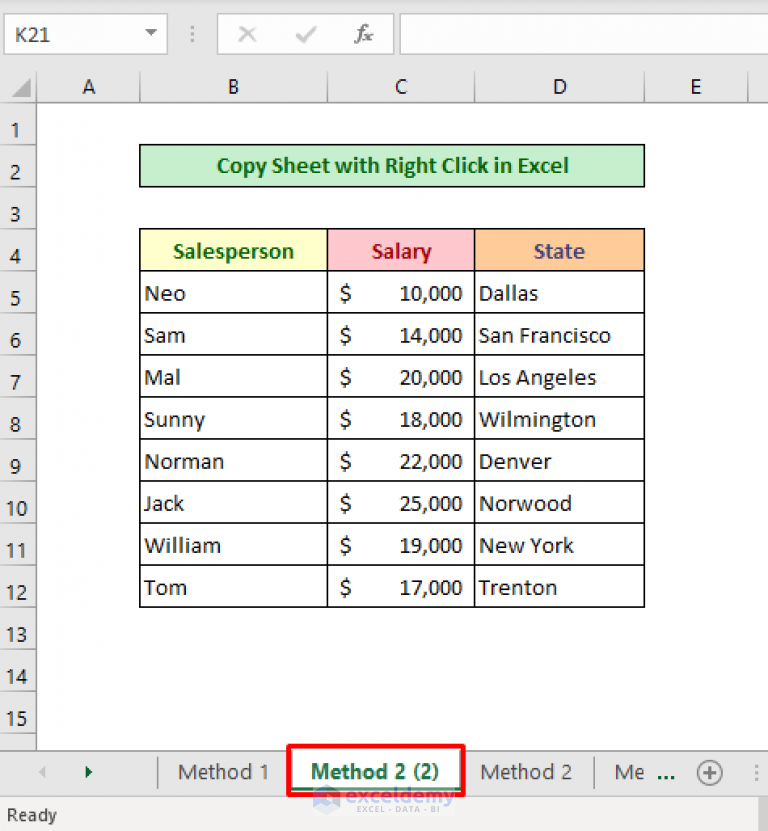Easily Copy Excel Sheet Multiple Times: Quick Guide

If you're looking for an efficient way to copy Excel sheets multiple times without repetitive manual labor, you've come to the right place. This guide will provide you with a quick and easy method to duplicate sheets in Microsoft Excel, saving you time and reducing errors in your work.
Understanding Excel Sheet Duplication

The concept of duplicating an Excel sheet is quite straightforward, yet knowing the right techniques can dramatically increase productivity. Here are the primary reasons you might want to copy Excel sheets:
- Template creation: Use a master template and replicate it for different scenarios or time periods.
- Data consistency: Ensure uniformity across multiple sheets where similar data sets are required.
- Efficiency: Automate the copying process to avoid repetitive manual tasks.

Step-by-Step Guide to Copy an Excel Sheet

To quickly copy an Excel sheet, follow these steps:
- Right-click on the sheet tab you wish to duplicate.
- Choose Move or Copy… from the context menu.
- In the dialog box, ensure the option for “Create a copy” is checked.
- Select the location where you want to place the copied sheet. Here are the options:
- Before Sheet: to insert the copy before a specific sheet.
- To book: choose this to copy within the same workbook.
- New workbook: to copy to a new workbook entirely.
- Click OK to complete the duplication process.
📌 Note: If you’re copying within the same workbook, ensure no important data is overwritten by the new sheet’s position.
Using Excel’s Built-in Functions for Sheet Duplication

Excel offers several built-in features to manage and copy sheets, including:
- VBA Macros: Automate repetitive tasks like copying sheets. Here’s a simple macro to duplicate the active sheet:
Sub CopyActiveSheet()
ActiveSheet.Copy After:=ActiveSheet
End Sub
📝 Note: Make sure to enable macros and follow security best practices when using them.
<li><strong>Name Box Technique</strong>: Type the name of the sheet you wish to copy, followed by "!" and then the name of the destination sheet, like "Sheet1!Sheet2".</li>
Advantages of Using Excel Formulas Over Manual Copying

Here’s a comparison table to illustrate the benefits of using formulas for sheet copying:
| Method | Manual Copying | Excel Formulas |
|---|---|---|
| Efficiency | Time-consuming for large datasets | Instant |
| Error Risk | High (manual entry errors) | Low (formula-driven) |
| Scalability | Limited | High |
| Consistency | Can be inconsistent | Ensured |

⚠️ Note: While formulas are efficient, they require a certain level of understanding to implement correctly.
Advanced Tips for Sheet Copying

For those who delve deeper into Excel, here are some advanced techniques:
- Power Query: Use Power Query to automate data refresh from multiple sheets or workbooks.
- Excel Add-ins: Explore third-party add-ins for more complex automation needs.
- Excel’s Consolidation: Use this feature to combine data from multiple sheets automatically.
Conclusion

Copying Excel sheets doesn’t have to be a mundane and time-consuming task. By understanding the different methods available, from simple right-click techniques to VBA macros and Excel formulas, you can significantly streamline your workflow. This guide has shown how to replicate Excel sheets efficiently, providing you with both basic and advanced options to suit your needs. Remember to always verify your data post-copy to ensure no errors or data loss occurs.
Can I copy a sheet to a different workbook in Excel?

+
Yes, when using the “Move or Copy…” option, select “To book” and then choose the workbook to which you want to copy the sheet.
What if my macros don’t work when copying sheets?

+
Ensure macros are enabled in your Excel settings, and check if any references or data connections are broken after the copy process.
How can I copy the sheet format without copying the data?

+
Use the VBA macro with an added step to clear the contents of the copied sheet:
Sub CopySheetFormatOnly()
Dim ws As Worksheet
Set ws = ActiveSheet
ws.Copy After:=ws
ws.Cells.ClearContents
End Sub



